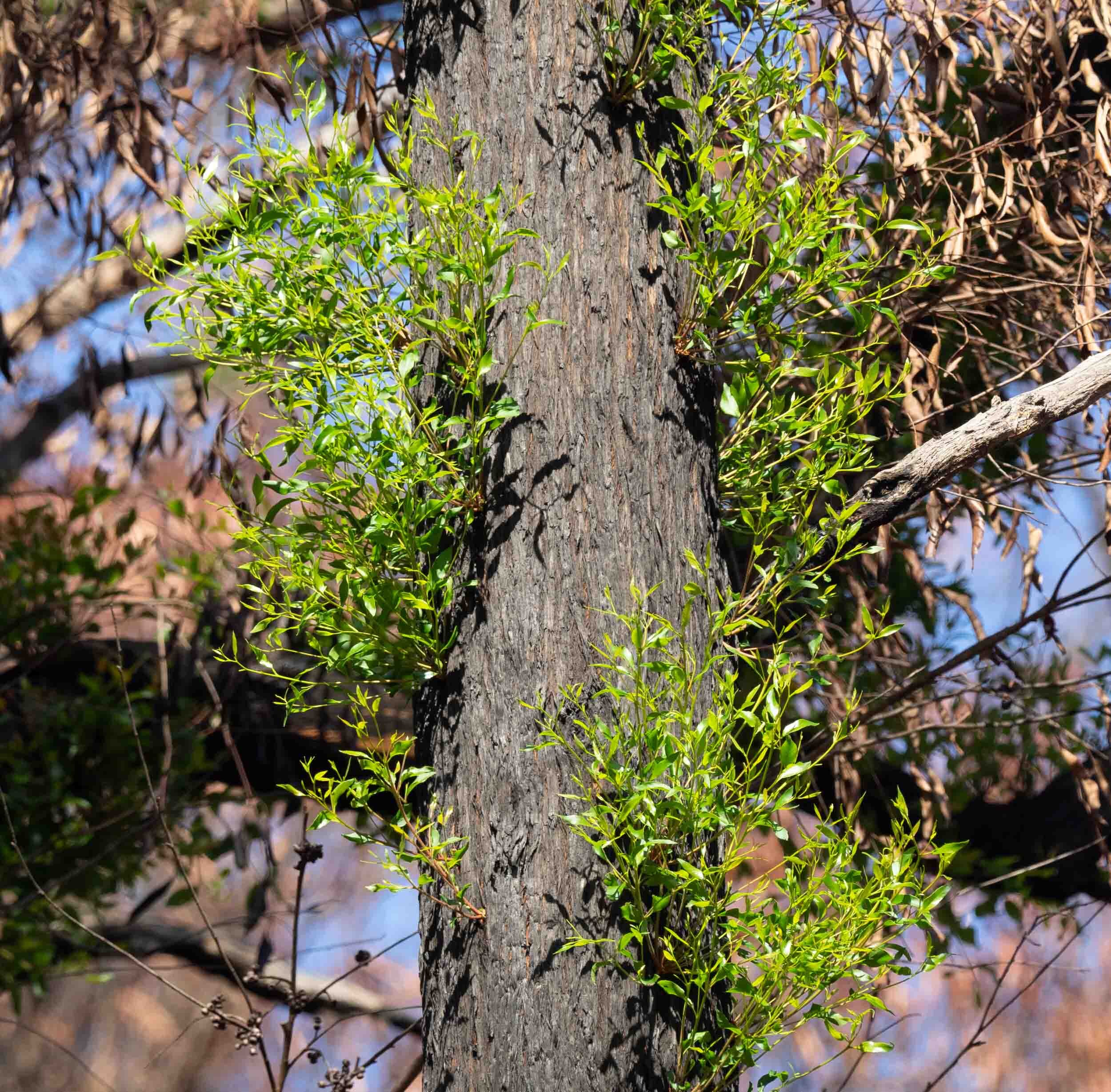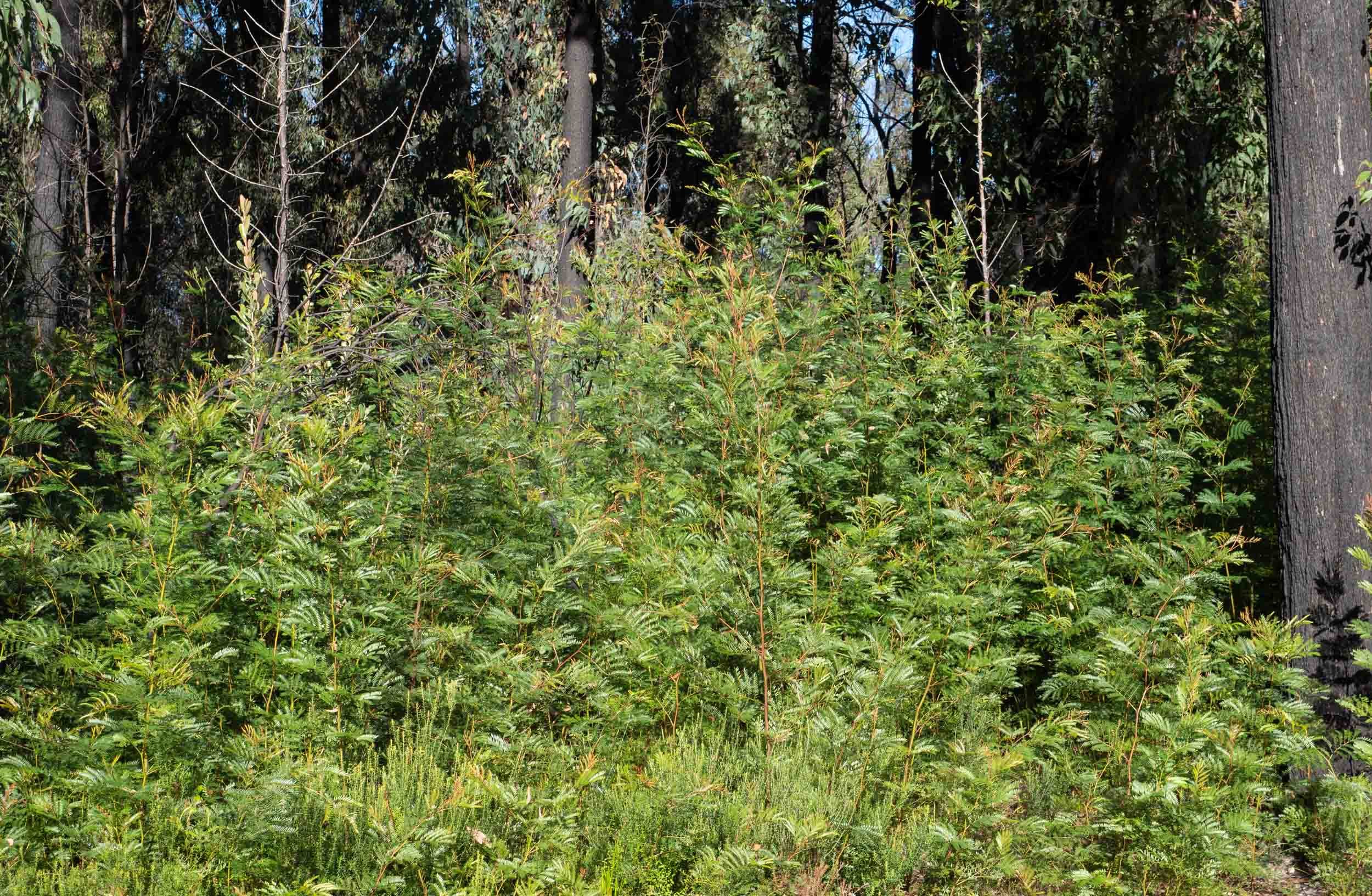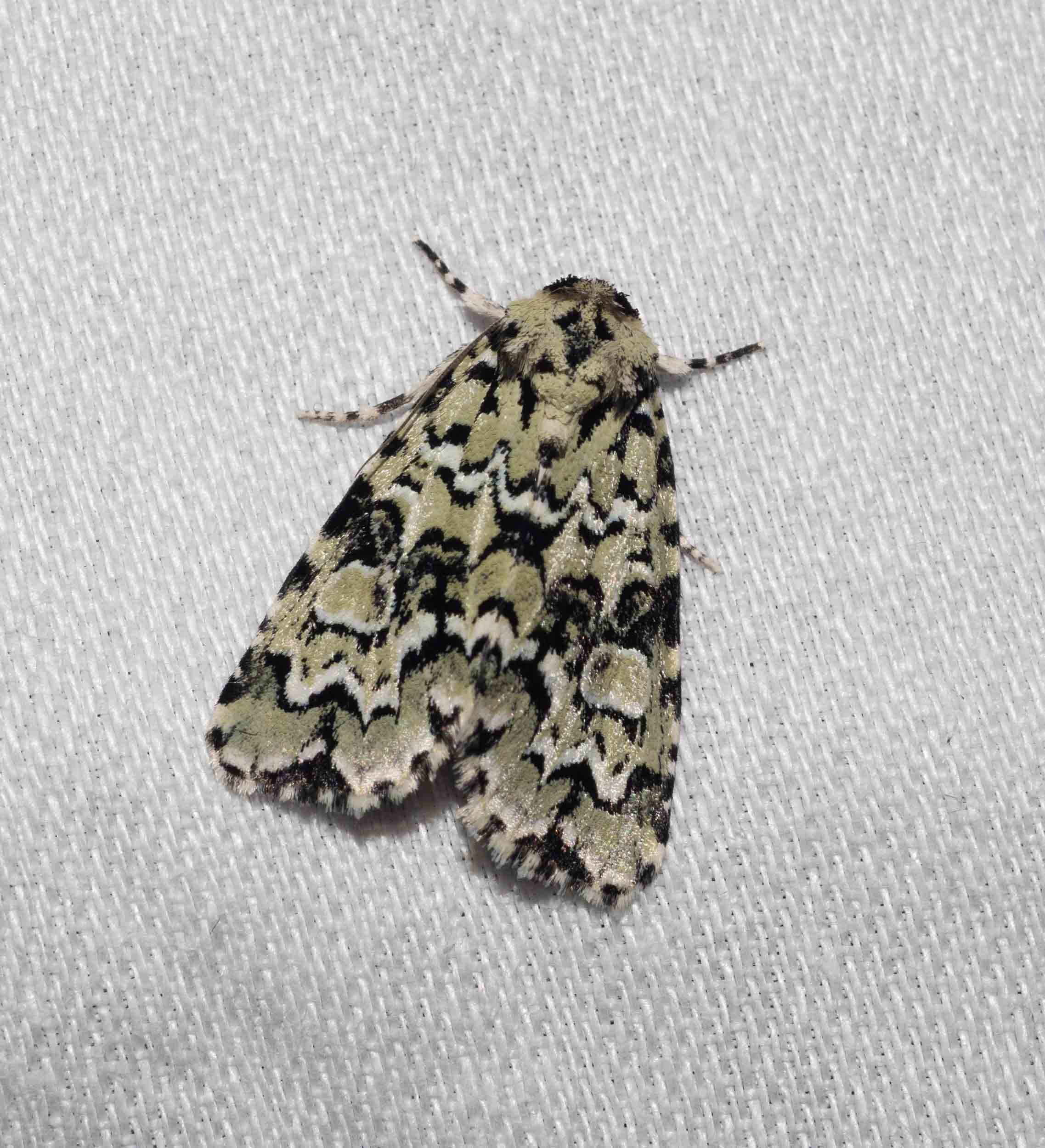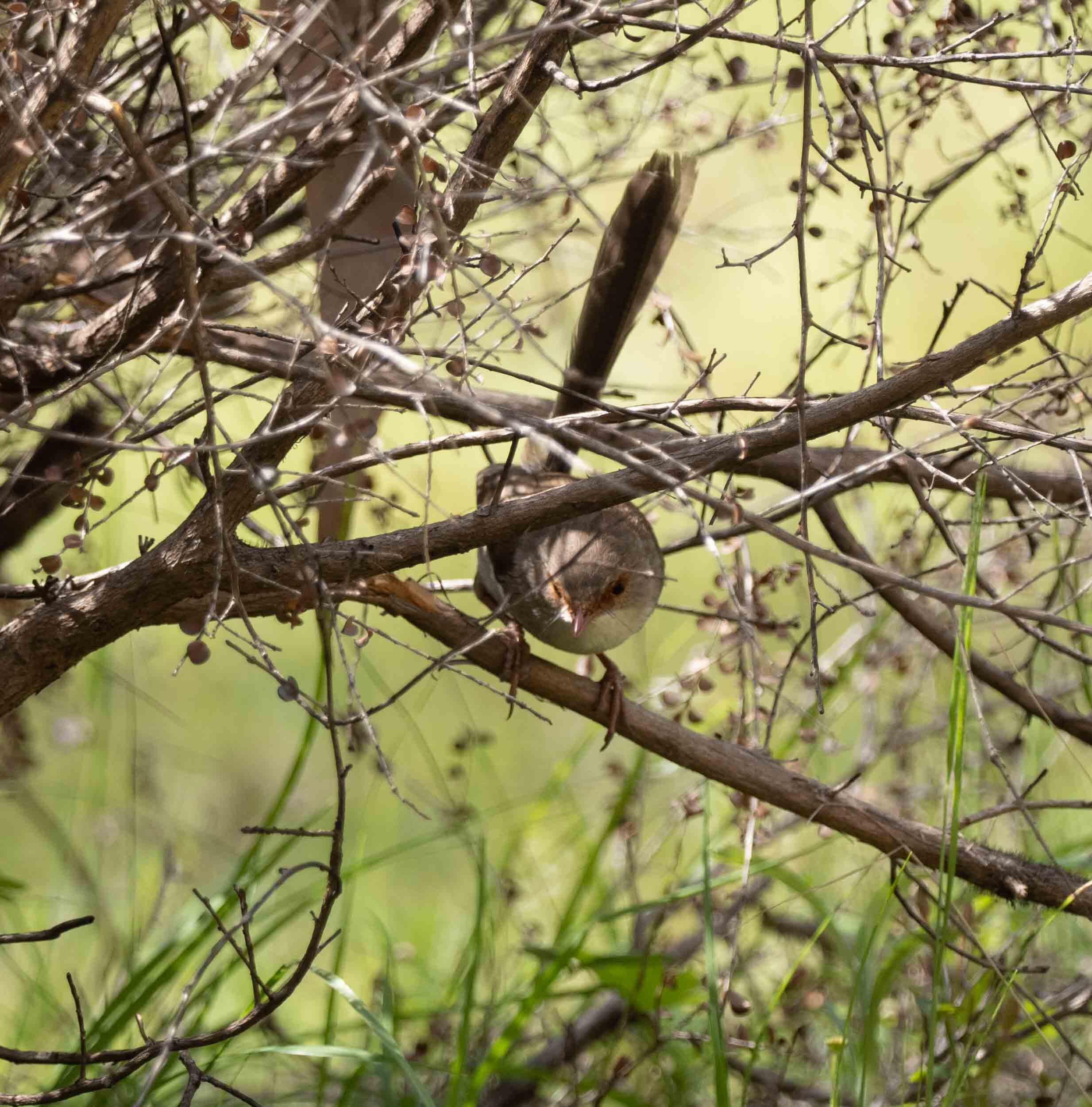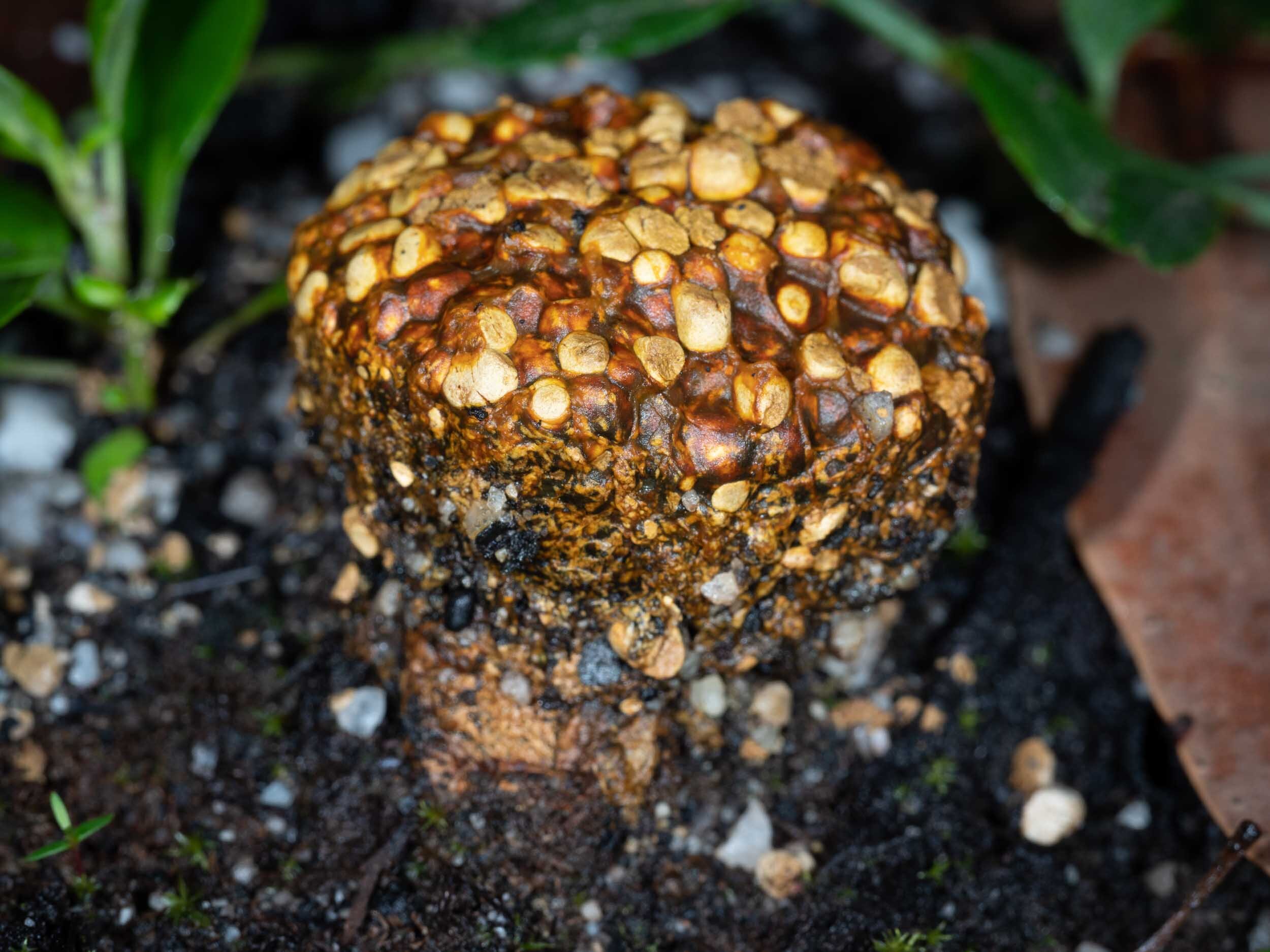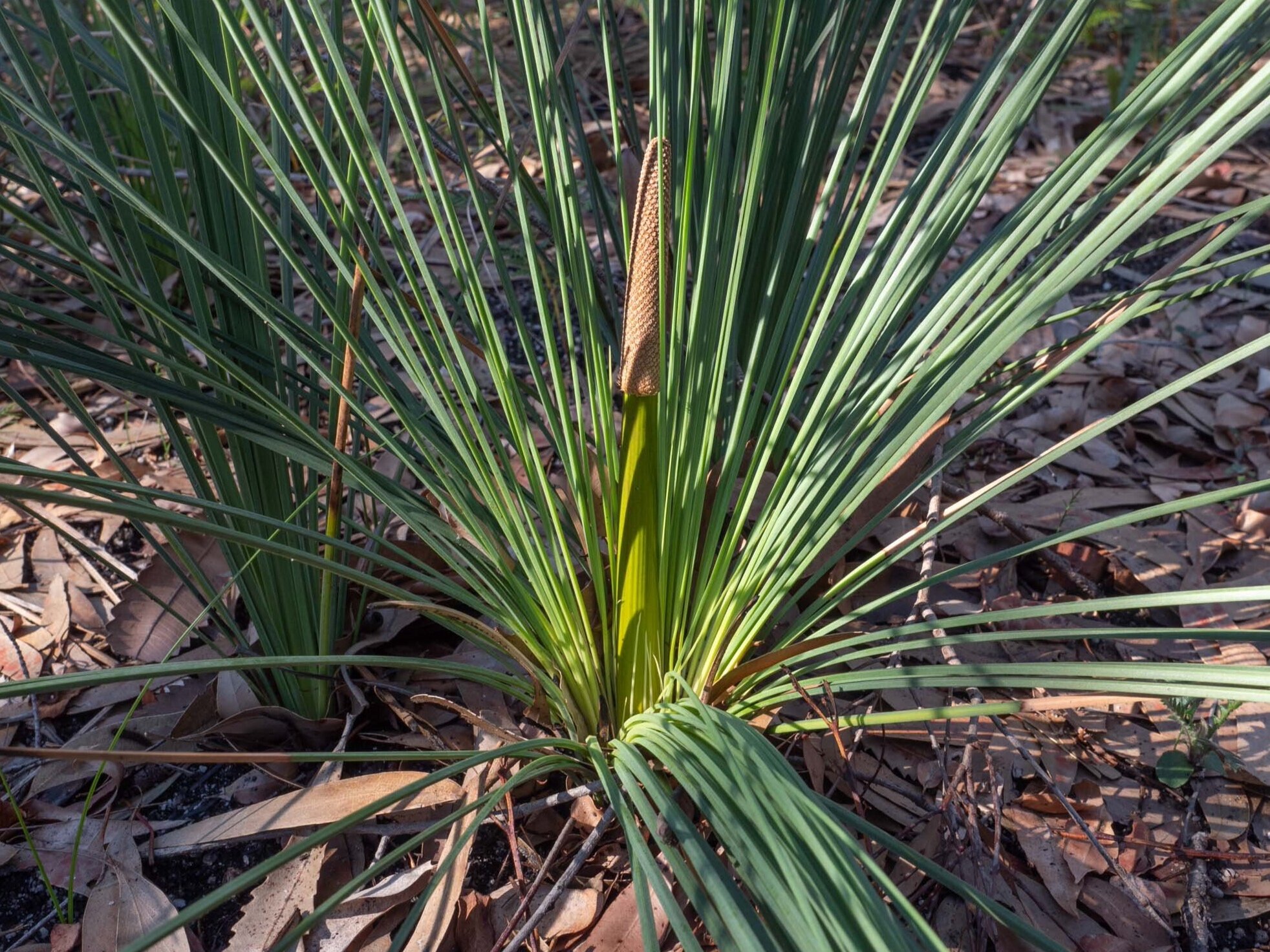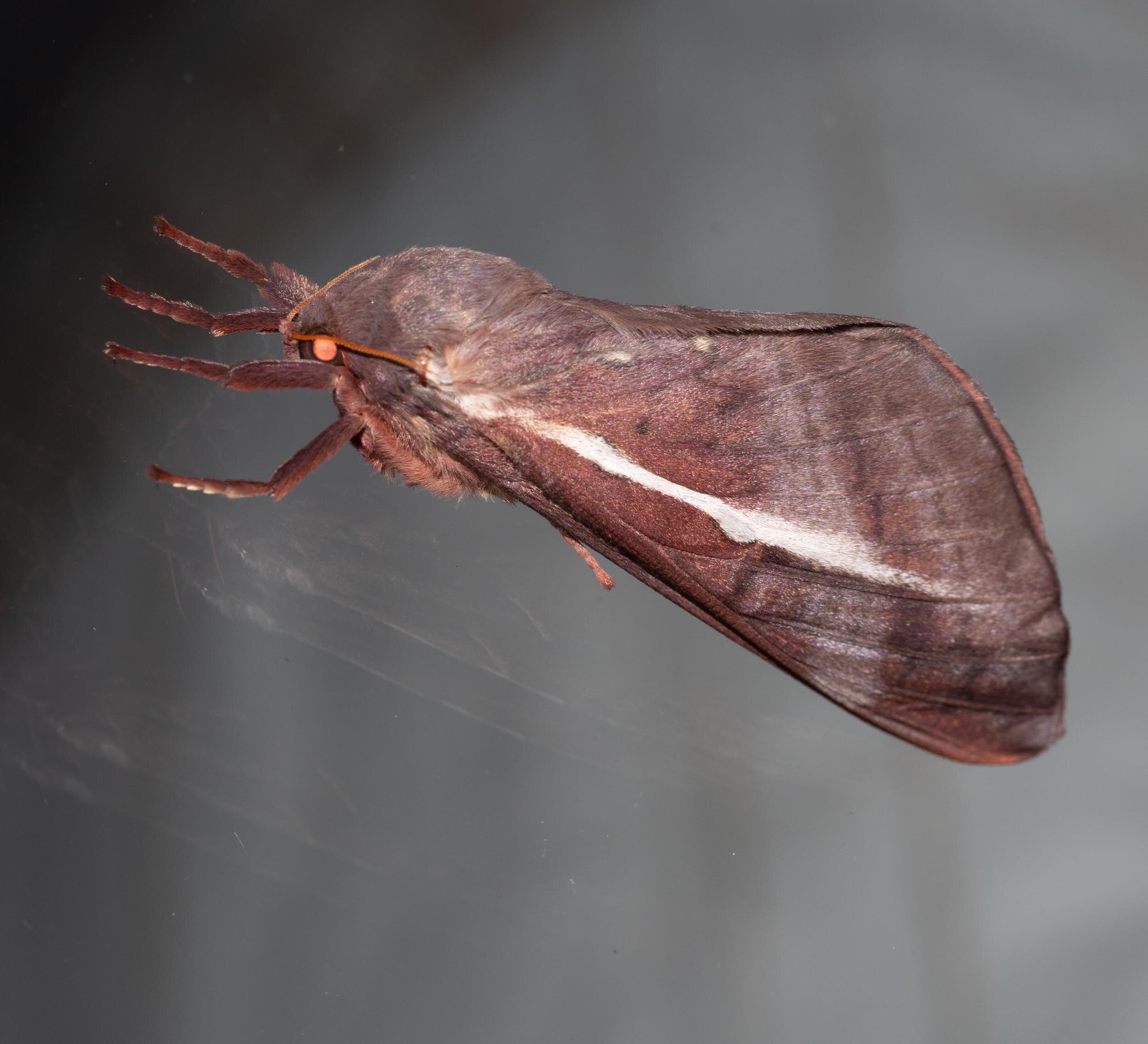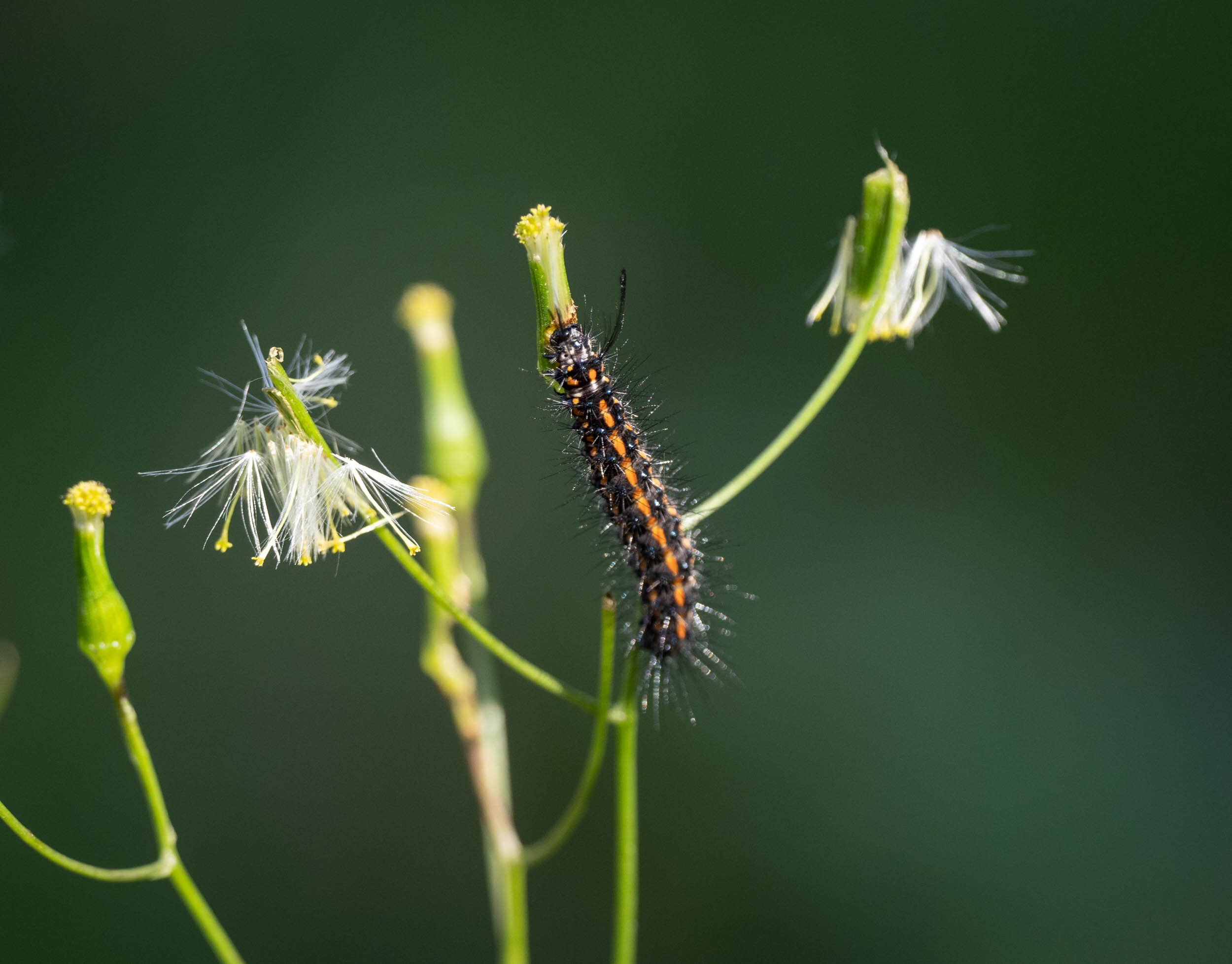The forest: five seasons on
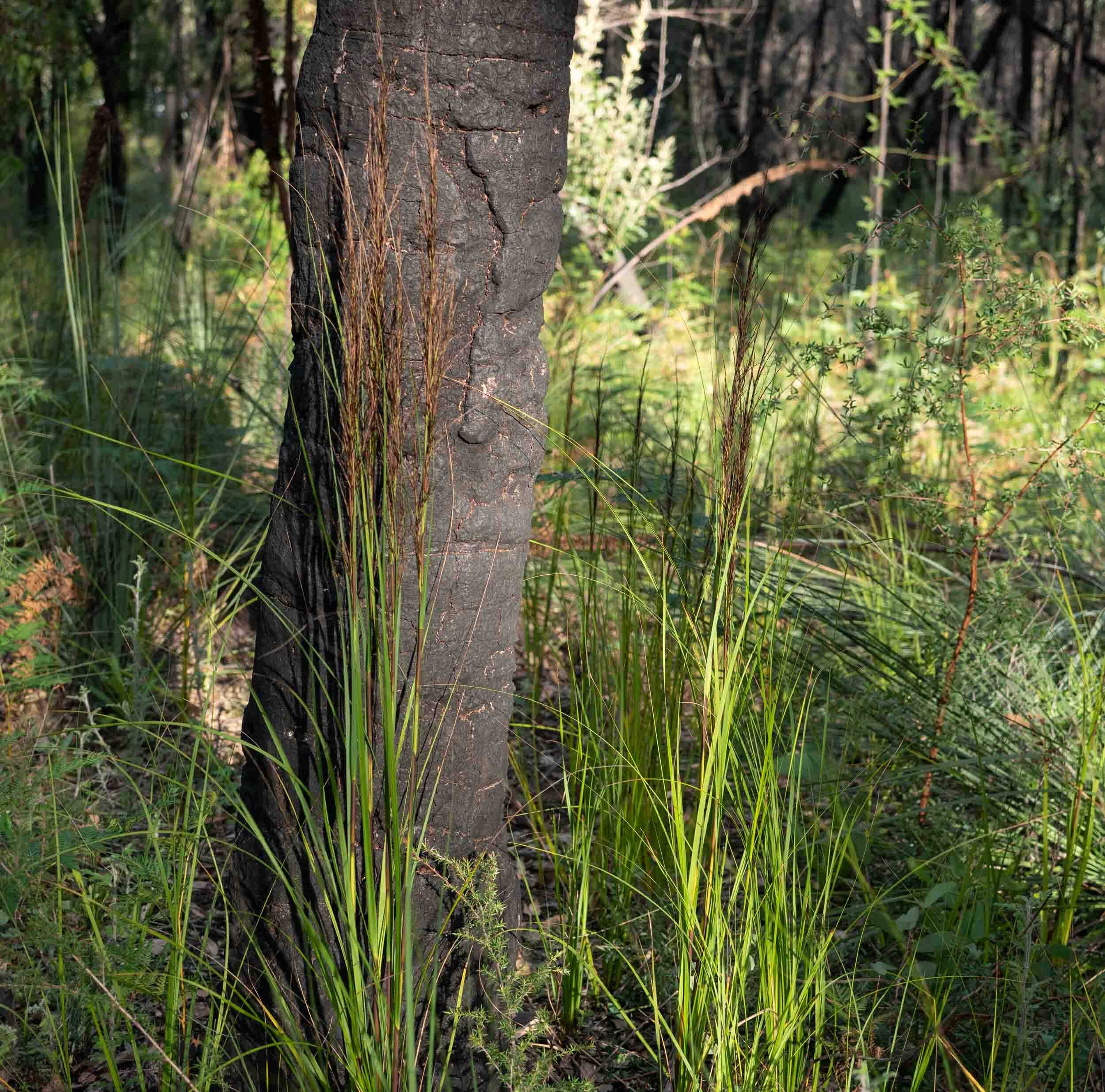
It’s Autumn. The cooler temperatures and shorter days have brought a slowing of the frenetic Spring and Summer regrowth of forest vegetation that followed the January 2020 Border Fire.
Now seems like a good time to take stock and summarise how the different layers of the forest - the undergrowth, the middle storey and the canopy - have recovered from the devastation wrought by the fire.
The long story short
20 days post fire
15 months later
A regeneration timeline (executive summary)
5 Jan 2020: fire sweeps through the forest
2 weeks: Scattered grass shoots and first seedlings of forbs and ferns appear; grasstree blades growing fast
3 weeks: First epicormic shoots of eucalypt trees
1 month (late Summer): Epicormic shoots appear on banksia trees and geebung bushes
2 months (early Autumn): Seedlings of over half of all home plant species have appeared; rootstock sprouting from many forbs, shrubs and trees; crown regeneration well underway in some eucalypts
3 months (mid Autumn): Dense epicormic growth present on trunks and branches of eucalypts, banksias and geebungs
5 months (Winter): Continued growth of Lomandra and flowering of Weeping Grass
7 months (late Winter/early Spring): Intense burst of flowering of several orchid species and many forbs
10 months (late Spring): Flowering of many more orchids and forbs; flowering of grasstrees
11 months (early Summer): Flowering of many grasses
13-15 months (late Summer/early Autumn): Vigorous vegetative growth across all strata of forest - wattles regrowing from seedlings are now waist high; crown regeneration complete in all eucalypts except for Silvertop Ash.
Click the button below to see a complete list of plants recorded in our home forest since April 2011.
This list shows when each species was first seen growing after the January 2020 fire and/or when it first flowered.
The long story
Read on!
The undergrowth - a dramatic revival
A modest but reassuring start
The undergrowth was completely destroyed in the fire. At ground level, nothing was left but ash and fallen, black branches.
Yet just days later regeneration was underway. Shoots of Blady Grass (Imperata cylindrica) appeared providing food for hungry wallabies. Within a month, these were joined by the first sprouts of a number of forbs, grasses, sedges and ferns - small green splotches on an otherwise ash-grey landscape.
By 2 months post-fire, things were picking up - we had seen signs of regeneration in over half of our home plant species.
While these were mostly just small seedlings, the growth was sufficient to partially cover the ash in more open areas of the forest - assisted by a steady fall of leaves from the crowns of the tall trees. (Scorched leaves can still be seen on many tree tops in the 20-day postfire photo above).
northern side of the forest - 2 months post-fire
The Grasstree Story
The runaway growth champion at this time and for several months thereafter was the Grasstree (Xanthorrhoea concava). A sizeable chunk of our forest is dominated by these plants - they number in their hundreds. They began to thrust green leaf blades upwards from the charred base just a week after the fire. Their growth continued inexorably, dominating the landscape in that part of the forest.
While the vegetative growth of Xanthorrhoea after fire was impressive, its flowering response in the coming Spring was truly spectacular, as seen in the photos below taken in late October. We estimate that there were around 1,500 of these flowering spikes in our forest at that time. In a normal year, we see just a handful.
You can read more about grasstrees, their response to fire and how we identified our home species in our post from August 2020.
Regeneration progresses slowly but steadily through Autumn
A burst of flowering of Weeping Grass (Microlaena stipoides) in mid-late March added to the ongoing growth of Rainbow Fern (Calochlaena dubia) on the northern side of the forest. You’d be excused for thinking the fire had missed this section of the forest - if you ignored the charred remains of bushes and blackened tree trunks!
31 March, 2020 - A flock of King Parrots grazing on the maturing seed heads of Weeping Grass
A partial pause in Winter
Plant growth slowed in late Autumn and Winter as temperatures dropped and days became shorter. However, the continued growth of several Lomandra species and Weeping and Blady Grasses helped to fill in gaps in the ground cover across the forest. Although our resident Eastern Grey Kangaroos were doing their best to reverse that process!
17 June, 2020
Despite the general slowdown, three species of orchids bloomed in Winter - Autumn Wasp Orchid (Chiloglottis curviclavia), Fringed Helmet-Orchid (Corybas fimbriatus) and Small Mosquito-Orchid (Acianthus pusillus). This was a prelude to an orchid extravaganza in Spring!
Spring arrives in a rush of colour
255mm of rain in July and another 88mm in August provided perfect conditions for an intense spurt of growth and flowering in the undergrowth in late Winter/early Spring.
This began with another orchid bloom. Six species - Nodding Greenhoods (Pterostylis nutans), Blue Fingers (Cyanicula caerulea), Lady Fingers (Caladenia catenata), Pink Lady Fingers (Caladenia carnea), Waxlips (Glossodia major) and Maroonhoods (Pterostylis pendunculata) - appeared in quick succession. These were all present in much larger numbers and more widely distributed than we’ve ever seen in the past.
A host of other undergrowth plants began to flower in early Spring, a selection of which are shown below. Like the orchids, many of these were much more abundant than normal.
Late Spring to Summer: the undergrowth goes wild!
As Spring progressed, a host of new plants began flowering, including several additional orchids. I was fortunate to witness the pollination method of the Small Tongue-Orchid (Cryptostylis leptochila).
Some of the newly flowering forbs were familiar (e.g. Hairy Pink-bells, Common Aotus, Tall Bluebell, Common Fringe-Lily). Others were species we’ve never seen on the block before (e.g. Kopata, Wonga Vine, Indian Weed, Forest Groundsel).
One of the late Spring flowering species - Holly Lomatia - was well known to us. However we had never seen it flower as this happens only after fire. It was a treat, but one which we hope isn’t delivered again too soon!
Waves of flowering of each forb species swept across the forest floor in succession, some lasting just a week or two, others much longer.
Grasses, sedges and rushes join in the flowering spree
As we moved from Spring to Summer, a dramatic change took place in the undergrowth. The tall flowering stems, culms, of many different grasses appeared quite suddenly, dwarfing most of the other undergrowth plants.
The scale of this flowering event was unprecedented in our experience. Species such as Redanther Wallaby Grass, which were previously represented by just a handful of plants suddenly appeared over large areas of the forest. Their culms reached heights we’ve never seen before.
I covered this grass flowering event in some detail in a previous post - Watching Grass Grow. So I’ll limit myself here to a selection of photos, which illustrate the elegant if understated forms of their inflorescences.
Flowering of sedges and rushes began somewhat later, in early Summer and continued through to early Autumn. Each has a distinctive inflorescence which is borne, like grasses, on a high culm. Sheath Sedge and Thatch Saw-sedge are two of the tallest plants in the undergrowth.
Late Summer brings rampant vegetative growth
Many herbs and forbs underwent a dramatic spurt of vegetative growth in late Summer/early Autumn, growing to 2-3 times their normal height. The panel of photos below shows some examples. We’ve never seen these plants looking so “leggy”. This extravagant growth has continued right up to the present time.
This event was undoubtedly promoted by the unusually high rainfall (520mm) we received between September 2020 and February 2021. But a fertilising effect from the ash-laden soil and extra sunlight resulting from the sparse forest canopy probably contributed.
Twining herbs such as Dusky Coral Pea (Kennedia rubicunda) and Running Postman (Kennedia prostrata) have covered large patches of the forest floor and climbed up the burnt trunks of bushes and small trees.
Hop Goodenia (Goodenia ovata), which was only rarely seen before the fire, forms dense, waist-high swathes of vegetation.
This now looks more like middle storey than undergrowth.
A completely new plant community has arisen on the slopes to the Wonboyn River, the dominant species being Kangaroo Apple (Solanum sp.), Large-leaf Hopbush (Dodonaea triquetra), Hairy Stinkweed (Opercularia aspera), Forest Groundsel (Senecio velleioides) as well as rapidly growing seedlings of Blunt Leaf Wattle (Acacia obtusifolia).
This has transformed largely bare, rocky slopes into a veritable jungle!
One notable undergrowth plant we haven’t sighted since the fire is Dodder-Laurel (Cassytha sp.). This herbaceous twiner was commonly seen in the forest, parasitizing a range of bushes.
The middle storey - a work in progress
While the regrowth of the forest overall has been impressive, a key component - the middle storey - still has a way to go.
This layer is made up of a diverse mix of several smaller tree species and dozens of larger bushy plants. Middle storey trees include the widespread Black Sheoak, Saw Banksia, Giant Honey-myrtle (Melaleuca), Black Wattle and Blunt Leaf Wattle, as well as the less common Port Jackson Pine (Callitris) and Willow Needlewood (Hakea). Dominant large bushes include Geebungs, several Teatrees, Lance Beard-heath and Austral Indigo.
The fire destroyed the entire shrub layer - only blackened sticks protruding from the ash covered soil remained. The foliage of middle storey trees was consumed or scorched, leaving bare trunks and spindly branches.
We chose to leave most of these burnt bushes and trees in place. It wasn’t clear which had been killed outright and which might later regenerate.
Even the dead ones serve a purpose, giving structure to the middle storey.
15 months on, this dead Hakea tree is still being put to good use.
Rapid regeneration by epicormic sprouting
We didn’t have to wait long to see the first signs of regeneration in the middle storey.
Just one month after the fire, we were excited to discover buds emerging from the trunks of both Geebung bushes and Banksia trees.
This strong regenerative response is due in part to the insulating properties of the bark of Geebung bushes and Banksia trees. Dormant meristems on the trunk or branches (epicormic buds) are protected from the heat of the fire by this covering. These are triggered to sprout, forming new leaves and branches.
Kerri has detailed the process of epicormic growth in an earlier post. It has worked spectacularly well in many cases, as shown by these recent Geebung and Banksia photos. All three species of Geebung in our forest (Persoonia linearis, Persoonia levis and Persoonia x lucida) have completely regrown their foliage. In fact, most of these plants have never looked so good!
One of our tall Paperbark Tea Trees (Leptospermum trinervium) showed the same epicormic response in Spring, sprouting flower-bearing branches from the trunk. This plant has flaky bark like Geebung bushes, which may provide a similar protective effect.
Regrowth by basal sprouting
Only a few mid storey plant species are capable of epicormic budding. Many of the others have regenerated by sprouting branches from the base of the plant or from the roots. Just a few centimetres of soil is enough to protect these parts from the heat of the fire.
The following gallery shows a range of bushes and one tree (Black Sheoak) that have regenerated strongly by basal sprouting. Earlier stages of regrowth of some of these species are shown in posts I made in March and April last year.
Replacement by seeding
Some of the mid storey plants - Willow Needlewood, Cypress-Pine and most of the wattles - were killed outright by the fire and have shown no signs of regeneration from the rootstock.
The only option for replacement of these is by regrowth from seed, which might be present in the soil seedbank or else dropped from the plant after the fire passes. (Of course this is also an option for plants that do undergo epicormic or basal sprouting).
We saw huge numbers of seedlings of Black Sheoak, Saw Banksia and several wattle species within 2 months of the fire - (see my post from March last year).
While some of these seedlings could have germinated from seed in the soil seedbank, many would have grown from seeds falling from fruit on burnt bushes and trees. The heat of the fire causes fruit cones to open, releasing their seeds.
Seed was clearly retained in some of the fruit long after the fire had passed. Yellow-tailed Black Cockatoos and Rainbow Lorikeets could be seen feeding on banksia and she-oak cones for weeks afterwards, as documented in earlier posts by Kerri and me.
The seeds of some mid storey plants germinated much more slowly than the sheoak, banksia and wattles. Willow Needlewood seedlings did not appear until 3 months and those of Cypress-Pine took even longer.
Seedlings of these species have also grown much more slowly than the wattles. Even today, they are generally less than 30cm tall, whereas wattles can be 4-5x that height.
Despite starting from ‘ground zero' (seed), many wattle bushes have grown so quickly that they now form a dense shrub layer in some parts of the forest.
While the regeneration of the mid storey has proceeded apace, none of the plants are yet close to their mature size. This will take several more years in most cases.
In addition, only a handful of the mid storey plants (geebungs, Austral Indigo and a Kanuka bush) have as yet flowered, although flower buds have recently appeared on Lance Beard-Heath bushes.
The absence of flowers and fruit will continue to have a significant impact on the forest ecology for some time to come.
Canopy Layer
The highest branches and foliage of our tallest trees - 7 eucalypt species - make up the uppermost layer of the forest, the canopy.
Flames from the burning undergrowth and mid storey blackened the trunks of these trees and the rising plume of hot gases scorched their crowns. Dead leaves from the canopy continued to drop onto the forest floor for weeks after the fire.
The absence of a canopy gave the forest a completely different feel. Sunlight flooded the forest floor in areas that were previously heavily shaded.
Eucalypt epicormic growth gets underway early
The first signs of recovery in some of our eucalypts were seen after just 3 weeks, as epicormic buds broke through the bark on the trunk and branches.
Kerri has explained in an earlier post how epicormic sprouting occurs and why eucalypt trees do it so successfully.
Within days these sprouts had generated stems and leaves. These new leaves resembled juvenile leaves, being different in shape and colour to mature leaves.
By mid-late February the upper branches of our Rough-barked Apple trees (Angophora floribunda) bore dense clusters of leaves. Recovery of the canopy layer was underway! Birds took advantage of the new growth, hunting insects in the nascent crowns.
‘Fuzzy trees’ form
The same epicormic growth of vegetation was occurring on the trunk, producing that familiar pipe-cleaner appearance of eucalypt trees following a fire. By early April, long, leafy stems had formed at the epicormic budding sites.
This dense trunk vegetation formed a ‘faux’ middle storey, partially replacing the bushes and small trees which had been destroyed by the fire. Birds like the Satin Bowerbird were seen hunting insect larvae in the lush growth.
Fast-forward to the canopy layer today
So how well have the crowns of our eucalypts regenerated, 15 months after the fire?
Rough-barked Apple trees, which began canopy recovery in advance of the other eucalypts, look perfectly normal today.
For a direct comparison, here is the same tree before the fire in July 2017 (LHS) and after the fire in March this year (RHS).
Many Angophora flowered heavily in late Spring, a good indicator of their health. Like the other forest vegetation, these trees would have benefited from the excellent rainfall we enjoyed in 2020.
The juvenile eucalypt leaves which were the first to regrow after the fire have been progressively replaced with mature leaves over the last few months - as shown in the third photo below.
From the earliest stages of their appearance after the fire, eucalypt leaves have carried a heavy load of lerps - the protective starchy coat which psyllids deposit around their body as they feed extract fluids from the phloem vessels of the leaves. (You can read more about lerps in my earlier post).
Lerps and other insects living in the canopy have provided a rich food source for many small birds, such as honeyeaters, thornbills, pardalotes and whistlers - partially compensating for the lack of flowers and fruit on mid storey plants since the fire.
The other eucalypts - White Stringybark (Eucalyptus globoidea), Mountain Grey Gum (Eucalyptus cypellocarpa), Woollybutt (Eucalyptus longifolia) and our single Yertchuk (Eucalyptus consideniana) and Messmate (Eucalyptus obliqua) trees - have taken longer to repair their crowns. But all now appear to have made close to a complete recovery. The first two photos in the top row of the gallery below show the same White Stringybark tree before and after the fire.
Silvertop Ash (Eucalyptus sieberi) on the other hand, still has a way to go. While upper branches of these trees bear a thick covering of vegetation, the ends of those branches still haven’t developed many side branches. They need to become “bushier”.
The first two photos in the panel below show Silvertop Ash trees in March this year (LHS) and before the fire in July 2017 (RHS).
The third photo shows one tree that has made more progress towards regaining a normal crown. I’m guessing that in a year or so it and all of our ashes will look like the tree in the middle.
What hasn’t yet returned
One component of the canopy layer that is still entirely absent is mistletoe.
Before the fire we had two mistletoe species, Creeping Mistletoe (Muellerina eucalyptoides) and Golden Mistletoe (Notothixos subaureus) - see first two photos in panel below. The former occurred widely across the forest, growing as a parasite on the crowns of many eucalypts. The latter was restricted to a few Rough-barked Apple trees.
The third photo below shows a patch of killed Creeping Mistletoe in a Rough-barked Apple tree. The tree has recovered, but its parasite is gone.
It’s not surprising that mistletoe is still missing, as these plants only regrow after Mistletoe Birds drop their seeds on the branches of a host tree.
A number of our tall eucalypts fell during the fire and burnt away completely, leaving long white streaks on the forest floor.
Many of these were trees that had died long before the fire struck. Indeed almost all of these dead trees fell and were consumed by the fire.
But very few of the trees that survived the onslaught of the fire have subsequently died.
4 days after the fire
One notable exception is a Silvertop Ash tree - one of the tallest of this species in our forest.
Sadly, this giant has shown no signs of regrowth beyond a few early epicormic sprouts, which eventually withered and died.
It will be a continual reminder of the 2020 Border Fire when the rest of the forest has completely regenerated.
And a wombat is making good use of the large hollow at the base of the tree - the perfect entrance to its burrow!
Alternative pathways for eucalypt regeneration
Like mid storey bushes and trees, eucalypts can regenerate by sprouting from the base of the tree or the buried rootstock. Indeed this is the only option available to small saplings where the trunk has been killed or totally consumed by the flames.
Many of our eucalypt saplings, all of which were destroyed by the fire, have regenerated very successfully by this basal sprouting pathway. The new tree - rising from the ashes - can often be seen standing alongside the charred remains of its former trunk.
Finally, eucalypts can regrow as seedlings - germinating from seed that was either dropped onto the soil from fruit (gum nuts) in tree tops or was already present in the soil seedbank.
Huge numbers of seedlings were seen at 2 months after the fire.
14 months later, many of these have gone on to develop into small saplings - generally around 60cm high.
What happens next?
The fire took our forest ecosystem back to scratch. It has recovered remarkably well in the 15 months since that catastrophic event. But it’s not the same as before.
Some plants are missing. Others have returned but are still at an early stage of growth.
There are new species we’ve never seen before.
The spread of species over the forest has changed - plants that previously had restricted distributions have become widespread.
There are whole new plant communities, like the dense groves of vegetation overlooking the river.
The growth of young wattle, sheoak, banksia and eucalypt plants in recent weeks has been extraordinary. This is altering the appearance and composition of the forest in many areas.
Some of these changes will be passing. Several of the new plants are pioneer species which die back quickly after their first appearance. For example, Wonga Vine, a new home species, has already disappeared. Others, like Kangaroo Apples (Solanum spp.) and Red Passionflower are looking decidedly unhealthy and probably won’t survive much longer.
A newly emergent dense grove of Sunshine Wattle trees lies in an area populated by the same species a decade ago. These original wattle trees died back in a natural succession process well before the fire arrived. The same could well happen to this new population.
Competition between plants for space, water and nutrients will intensify as they grow. Species that have benefited from the extra sunlight on the forest floor may struggle as the eucalypts regain their crowns and the canopy closes. There will be winners and losers.
No, the forest is not the same as before. But there never is such a thing as “the same” where ecosystems are concerned. They are always in a state of flux.
We look forward to observing and documenting these changes as the years pass.





































































































































